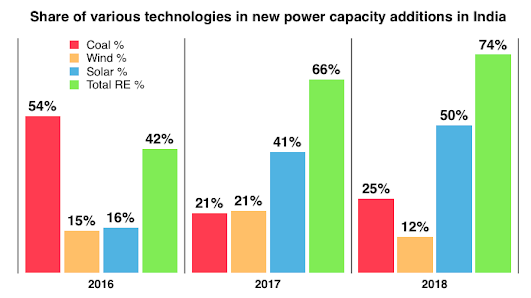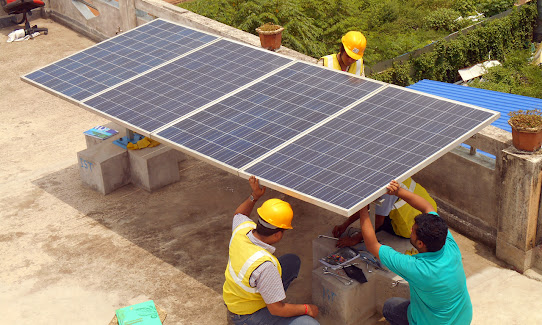Solar energy can successfully bridge India’s energy
Indian solar growth
Introduction
Indian renewable energy sector is the fourth most attractive renewable energy market in the world. India is ranked fourth in wind power, fifth in solar power and fifth in renewable power installed capacity as of 2018.
Market Size
As of August 31, 2020, installed renewable energy capacity stood at 88.79 GW, of which solar and wind comprised 35.73 GW and 37.99 GW, respectively. Biomass and small hydro power constituted 10.14 GW and 4.73 GW, respectively.
Investments/ Developments
According to the data released by Department for Promotion of Industry and Internal Trade (DPIIT), FDI inflow in the Indian non-conventional energy sector stood at US$ 9.22 billion between April 2000 and March 2020.
Government initiatives
Some initiatives by Government of India to boost India’s renewable energy sector are as follows:
- In August 2020, the government announced plans to offer land near its ports to companies for building solar equipment factories.
- India plans to add 30 GW of renewable energy capacity along a desert on its western border such as Gujarat and Rajasthan.
- A new Hydropower policy for 2018–28 was drafted for the growth of hydro projects in the country.
- The Government of India has announced plans to implement a US$ 238 million National Mission on advanced ultra-supercritical technologies for cleaner coal utilisation.
- The Ministry of New and Renewable Energy (MNRE) has decided to provide custom and excise duty benefits to the solar rooftop sector, which will lower the cost of setting up as well as generate power, thus boosting growth.
- Indian Railways is taking increased efforts through sustained energy efficient measures and maximum use of clean fuel to cut down emission level by 33% by 2030.
It is expected that by 2040, around 49% of the total electricity will be generated by renewable energy as more efficient batteries will be used to store electricity, which will further cut the solar energy cost by 66% as compared to the current cost. Use of renewables in place of coal will save India Rs 54,000 crore (US$ 8.43 billion) annually. Renewable energy will account for 55% of the total installed power capacity by 2030.


